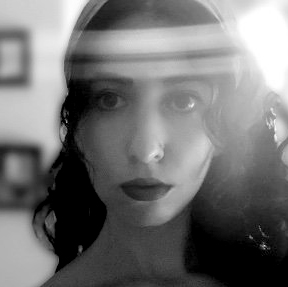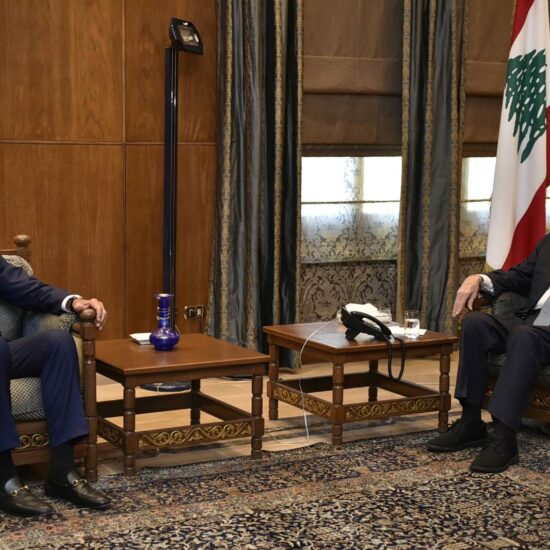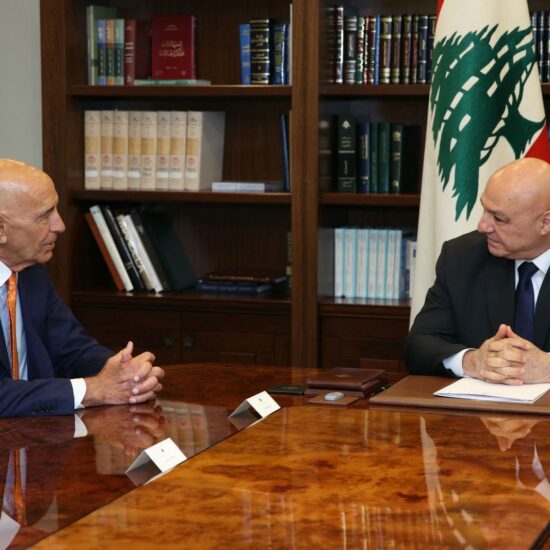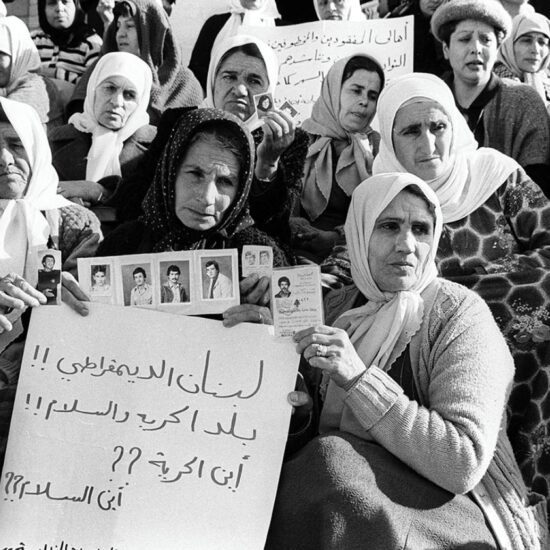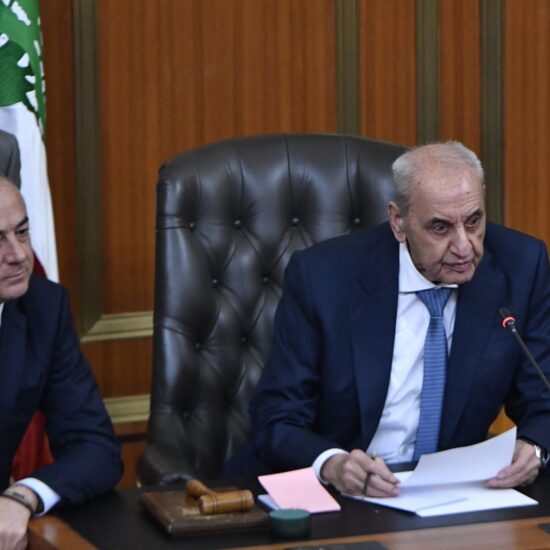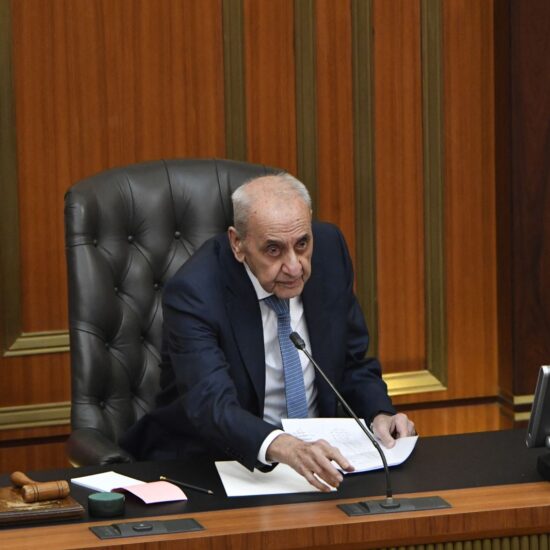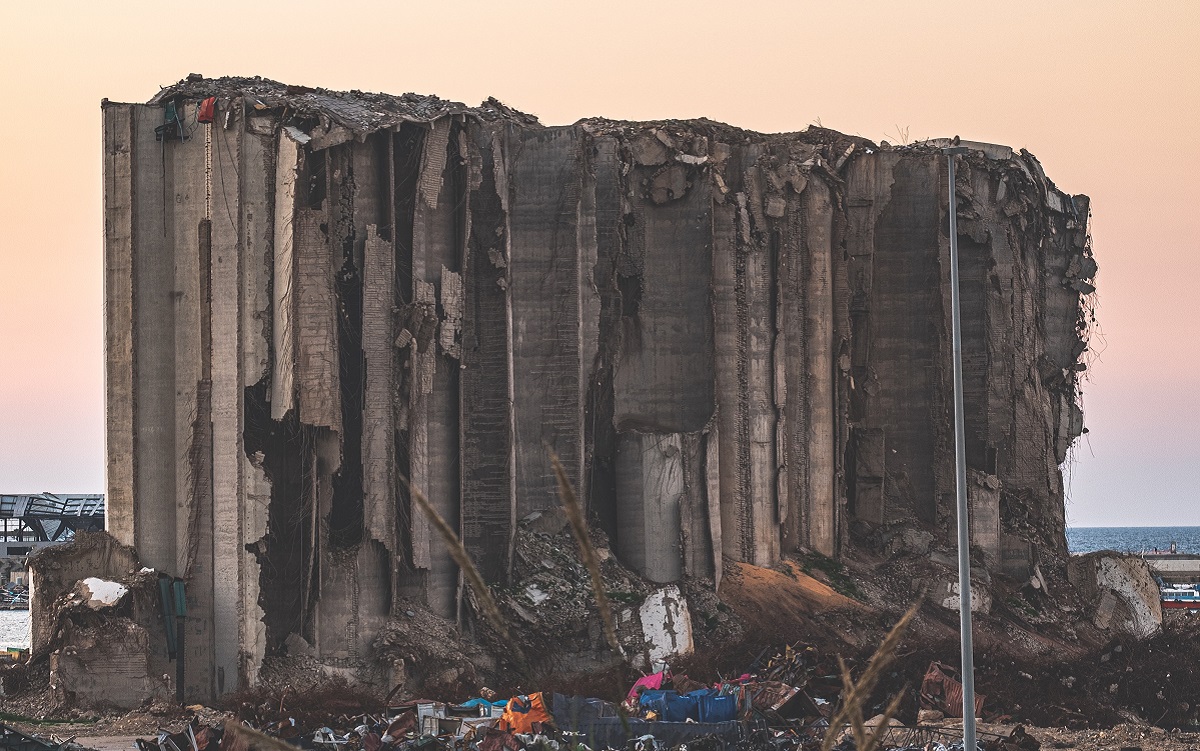
Last autumn, when a proposed rendering for a Beirut Memorial Park began making the rounds on social media, replete with a “Remembrance Ring” overlooking the city’s ruined silos, a large-scale green park, and an upper plateau offering “panoramic views of the Mediterranean Sea”, it was met with fierce public outcry.
Though the park, which was conceived in the wake of the August 4th explosion and purportedly meant to commemorate its fallen, had yet to see the light of day, if ever it even would, its realization seemed to be beside the point. The mere suggestion of it brought offensively to life through computational imaging was enough.
“So this is what’s going to fix all the s..t?” wrote one indignant party. “300,000 people left homeless and all they’re thinking about is doing a (insert twinkling star emoji) memorial park (insert twinkling star emoji)?” wrote another.
“More than one hundred days after the tragedy our rage remains intact,” wrote architect Carlos Mubarak, the man at the helm of the ‘civic initiative’. “And our grief will not stop us from pursuing our aspirations, and they are big.”
And just what are these big aspirations of which he speaks in said letter to the “Lebanese people”?
Not reparations for those whose lives were laid to waste by the 2,700 tons of ammonium nitrate that shook their city.
Not a campaign to take the ruling elite to international court for the malfeasance that led to its virtual inevitability.
But a “powerful and symbolic project that crystallizes the torment of a nation.” A concrete and glass jungle of a memorial as woefully apocalyptic (to many) in its spatialization, intent, and design as the very conditions that engendered its proposed existence.
Commodified pain
Like so many others, I find the very idea of it galling, let alone its three-dimensional projection.
That it was proposed so soon after the explosion with still no semblance of accountability or reconciliation is also objectionable.
And though its feasibility anytime in the foreseeable future is unlikely, I find myself returning again and again to its image as though it were an omen or an emblem.
When I asked architect, sound artist, and researcher Mhamad Safa what such a sight signified to him, he echoed a sentiment I had heard before, albeit in different contexts.
“The memorial is a part of this whole trend in which pain is commodified and its imaging is the central part. Images are an economy of information, of attention. It’s not something that you see and move on from. In the case of the memorial, it can predict a reality. It’s the creation of a world.”
The reality that the proposed memorial is predicting already, exists in a way, even if the memorial itself does not.
And the world that it is an extension of? Neoliberalized to the umpteenth degree and at its proverbial tipping point. Solidere, for instance, is one iteration of such neo-liberalization and an endeavor that one would be remiss not to mention when considering the implications of such a proposition as the Beirut Memorial Park as well as the more pervasive trends of which it is symptomatic.
Following the conclusion of the 15-year Lebanese Civil War, Solidere was a company founded by the country’s former prime minister Rafic Hariri in a bid to redevelop Beirut’s devastated Central District. Instead, it was turned into a hyper-privatized hyper-homogenized husk of its former bustling and diversified self, as haunting in its unpeopled plastic futility as the actual ruins of the war. This, invariably, set a precedent. One from which the people would begin to recoil and eventually rail against.
“The notorious elimination of all public mediation by way of monetizing every remaining bit of public property in downtown Beirut had succeeded in estranging the most disenfranchised,” wrote Safa in his latest piece for Ashkal Alwan. “It delimited a zone that strictly catered to the ideological elite, bridging it with a future of accelerated financialization.”
When I broached this point with Safa, commenting on how reminiscent I found it of the proposed Beirut Memorial rendering, he responded zealously and in no uncertain terms.
“Exactly. It’s symptomatic of the Lebanese fetish for memorials and monuments as well as a certain political class wanting to refashion the narrative and show the public that it’s over. That you can move on now. All the people that died, all the people that we killed? We’re not going to negotiate it anymore.”
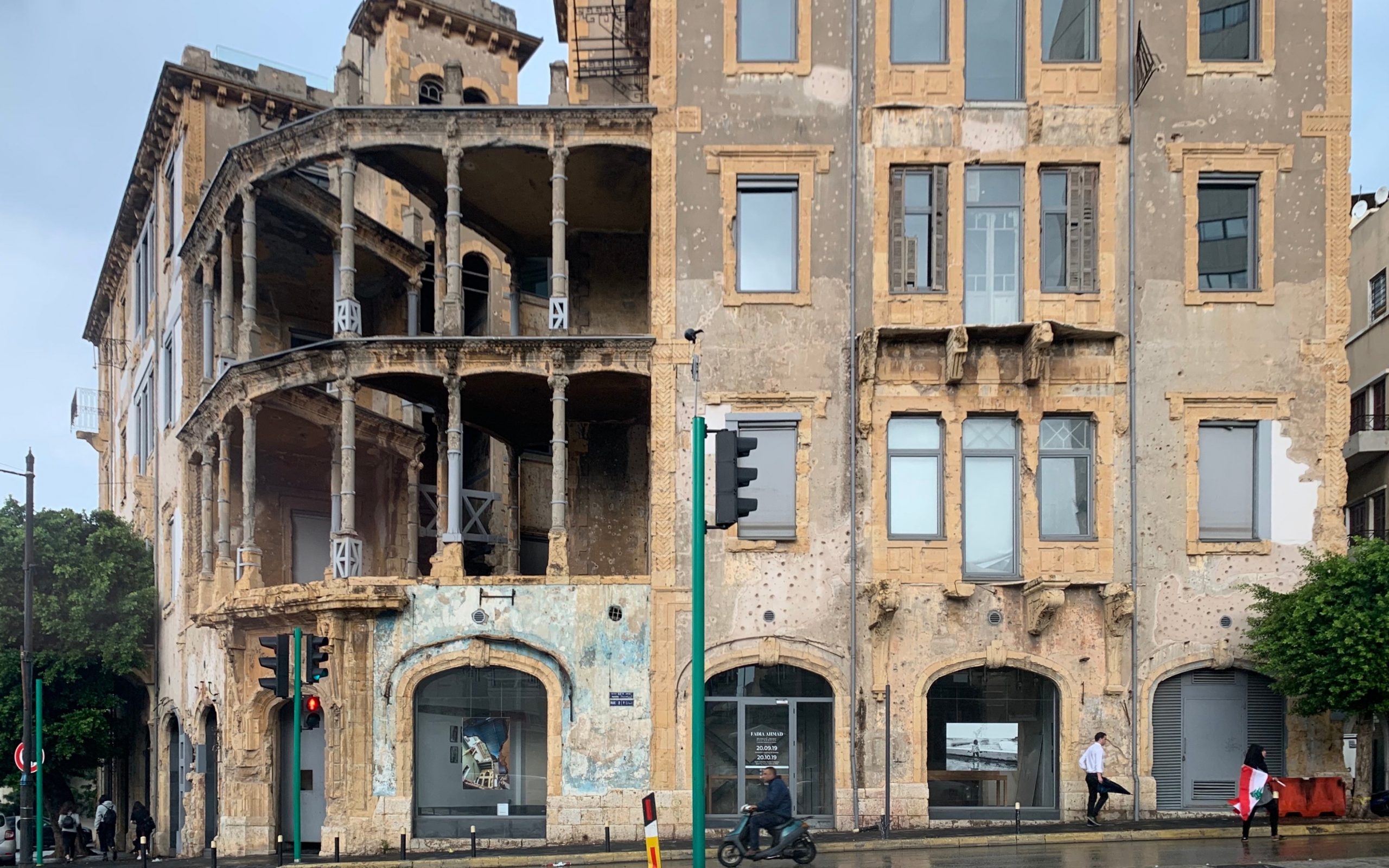
A palimpsest city
The word monument is derived from the Latin word monumentum, which, in turn, is derived from the verb monere meaning “to warn,” implying that its physical counterpart is something to pay heed to. Something that not only resurrects dark pasts from which to learn but perhaps signals not-so-distant futures to be inherited. In Lebanon, as in so many countries around the world in the throes of their own respective reckonings, the two are working together in not so harmonious tandem. In fact, they don’t seem to be working in tandem at all. If anything, they are aggressively, diametrically opposed.
Beirut, for instance, it’s often referred to as a palimpsest. Mostly everywhere you go you can see the traces of the beauty and the ruin of an empire, follow the fissures of a failure that could have been avoided.
Every structure, really, is a memorial in and of itself bearing silent and brazen witness to decades of undoing. Every street a haunting of what could have been. This begs some crucial questions: What is a memorial’s function anyway? And in the case of Lebanon, how is that reconciled with the State’s fraught relationship with the very things it’s meant to house?
Beit Beirut, the urban cultural center, is one such structure that continues to bear witness, like a patient half-etherized upon a table, watching parts of its own anatomy removed in real time and unable to do anything about it.
It’s also the closest thing the city has to an urban memorial. Straddling the Civil War’s former demarcation line between East and West Beirut, the center used to be a residence called the Yellow House, but once war began to rage, a right-wing Christian militia moved in and converted it into a makeshift sniper’s nest.
In the late 70s it became a fortified retreat. And what has since become of it, many believe, is exponentially worse than what the fifteen-year period of strife ever did, or could.
“It was supposed to be a museum of memories,” said Lebanese architect and heritage-preservation activist Mona Hallak wistfully. “Not the museumification of trauma.”
We were both rattling off the many ways in which we felt the structure was failed by those who should have been its preservers, its protectors. The fabricated bullet holes, the prosthetic elements, the metallic additions, all of it quite literally a travesty. And upon viewing the structure now, eight months after the enfeejar, I can’t help but notice another flagrant irony: the very structural elements added in the municipality’s purported attempt to preserve it are the only elements of the ruin that were susceptible to being destroyed and, in fact, were.
“Sometimes I wake up and think ‘how did I allow that?’” recalls Hallak, her words trying to reverse engineer how it all went so wrong. How her fight for its preservation became a preamble for its destruction. “But there was this fear that if we tried to stop the architect outsourced by the municipality, maybe the building would be destroyed completely. This is what they do. They bring you down to the level of feeling it is better to have this than nothing at all.”
Hallak belonged to a coalition of architects who fought for the building’s preservation. She spent seven years trying to coax the municipality into expropriating the building. Her campaign was ultimately a success, but what has transpired in its wake, not at all at her behest, she feels is anything but.
“Every detail that the architect touched is an intrusion, a distraction,” she asserts. “This kind of intervention adds a layer of detachment from the original structure and it is actually very violent.”
Destroying before rebuilding
I consider violence as manifest in structure. How it dazzles and at the same time binds. How systems of oppression and architecture can, in fact, work in a kind of feedback loop, each buttressing and giving rise to the other. Beit Beirut, for instance, there is an architectural grandeur to it from the exterior. An energy that speaks untold volumes, pulling you to its center of mass, but once inside, you are greeted by a cold and almost clinical modernism, as incongruous as it is half-baked.
22-year-old architecture student Sarah Barakat was once, admittedly, enamored with it: The gleaming whiteness, the seemingly valiant preservation initiative, the grand, sweeping gestures. Then she heard Mona Hallak actively criticize the very space she was standing in, the litany of grievances perfectly matching the one she had recently recited to me.
“The architect destroyed this beautiful building,” she proclaims, almost as though she were realizing it for the first time again, her eyebrows raised in indignation. “You don’t feel like you’re inside of it at all. You feel like you’re in a box inside the building. It’s completely alienating.”
The words resonated loudly. When I entered the space, I too did not feel like I was inside of it. It was supposed to be a museum of memories. I walked up the clunkily-made inclined stepped ramp, looked for the vestiges of the building’s former self only to find so much of it shot through with unsightly steel beams, rivulets of shattered glass from solar panels that, because of the structure’s flawed design, saw no light. No, it was not a tender exploration into a museum of memories. It was a state-sponsored descent into a white box of oblivion.
“It’s reflective of so much,” says Hallak referring to the handling of the structure and what it was meant to represent.
“In this country, there is no consensus on anything whether it be memory, how to commemorate it, or why.”
I couldn’t help but draw parallels to the proposed memorial. It is just another one of these white boxes after all, shrouding truths in a synthetic palimpsest, cheapening and ridiculing a people’s trauma by way of a redemptive aesthetic.
“When your computer doesn’t work, do you throw it away or try to fix it?” analogizes Sarah. Her pause, weighted and incriminating. “You try to fix it. You find a solution. The problem with architecture these days is that they don’t focus on the problem or on what is already there. They want gadgets. They want money. They want to destroy before they rebuild.”
The Beirut Memorial Park would, in essence, be doing just that. Usurping a site that is already teeming with memories and converting it into a crystallized ground-zero of neo-colonial nothingness. And I think, ultimately, the thing that is as distressing as how the proposed rendering intends to memorialize is how it intends to project, which is pervasive of a larger and troubling trend gripping the world over.
“If there’s going to be any type of memorial, I want it to reflect that we’ve hit rock bottom and we’re moving into a new era,” says 30-year-old Celine Najem. “It should reflect the new reality and the new way of thinking because memorials should not just be there to help us remember, they should be there to help us think ahead.”
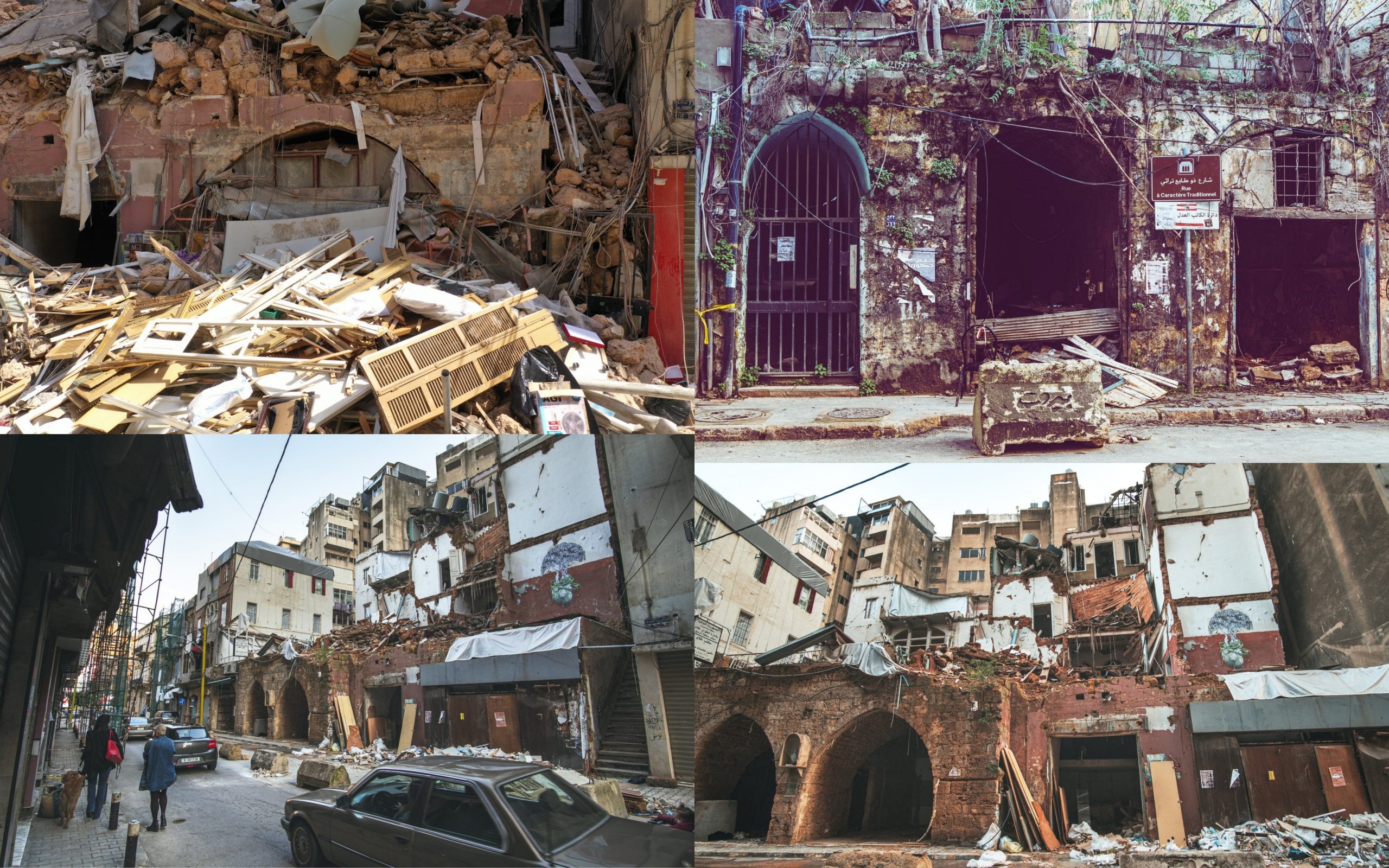
Cornerstones of utopia in a dystopian setting
Celine Najem lost her grandmother to sustained injuries from the blast, but when she speaks of her as well as the others who lost their lives to it, she makes clear that she does not remember them as victims, in the more traditional powerless sense of the word, but as people who were subject to the failure of a system. Her tone, in other words, is less of a lament and more of a just battle cry.
“Having a memorial only makes sense if there’s accountability, otherwise what are we doing? We’re just remembering them to remember them? The entire city blew up and nothing’s happening. No one’s being held accountable. They need to go in parallel or not at all.”
When I reached out to Carlos Mubarak for inquiry, his assistant told me he was not conducting any formal interviews at this stage because they are “currently preparing to soon launch an official media campaign for the project.” So Mubarak’s intentions remain nebulous, so does his stance on reconciliation and accountability, but it doesn’t take a wild stretch of the imagination to gauge what they may be.
“My first impression of the 3-D rendering was that it was a symptom, which could encourage us to talk about larger narratives,” remarked Safa. When perusing what Mubarak envisions, it is difficult to not perceive it as something that is part and parcel of a larger and injurious legacy. In addition to the Remembrance Ring, for instance, which Mubarak describes on his website as the “architectural crystallization of the blast,” there are also propositions for a “complementary sky tram” and a “roof helipad for drone taxi services.”
There are many people who would find such services alluring. Cornerstones of a utopia in which they’d like to live where electricity is in endless supply and ergonomic amenities abound. But there is something vaguely dystopian about the offering. In a city whose ruling elite is barely able to separate its trash from its water, whose squabbling sects can barely look after their most marginalized and vulnerable, there are still those citizens who choose to pull the wool over their eyes, quicker to act as the ingratiating infantrymen of the big tech and capitalist oligarchy than as the countrymen of their own people.
The proposed rendering is an extension of this. A Potemkin village whose tourists’ needs are paid more heed than those of its own inhabitants. It is also, even its seemingly benign visualization, firmly embedded in the larger narrative that is the heritage of colonialism and its spate of sinister byproducts, violence and profiteering being chief among them.
“There is a prevailing culture in Lebanon that considers architectural spaces from a political vantage point,” asserts Safa.
“In the past 30 years or so, since the economy has become reliant on real estate, it has facilitated the destruction of many buildings that are considered national heritage in order to create more speculation on land.”
And what kinds of buildings are built upon the land? Ones that are entirely divorced, aesthetically, ideologically, and otherwise, from the very people who cultivated it. The proposed memorial, then, is not only the perfect site upon which we could map a country’s value system through the prism of its relationship with its past, but its understanding of its presence and its conception of its future.
“Upon conceiving and designing these projects (monuments, museums, memorials) we should be aware of significant risks, such as the objectivation of memory, the aestheticization of suffering or worse, its banalization,” writes architect and professor Julian Bonder in Memory Works: On Memory, Ethics, and Architecture.
“But these are risks that we should take, with care and respect, so that memory does not stay immersed inside but is affirmed in the public domain. Aesthetics should be at the service of ethics, and of life.”
“What’s done is done”
When I asked Celine if she would want the memory of her grandmother affirmed in the public domain, she responded with a measured candidness and intensity.
“I would, but whatever memorial I’ve been to, I’ve never felt close to the memory of it,” she deduces. “For instance, in front of my grandma’s building, there’s a small memorial for three kids who died during the civil war. It’s been 10 years I’m passing in front of it, but I don’t relate to it. There’s something that got stuck in the past and doesn’t allow me to remember it the way I want to remember it today. It doesn’t allow me to incorporate it into my present.”
There is, I think, a fallacy that tries to convince us of the permanency of past events. That tries to convince us of why it is in our best interest for the conditions that engendered them to continue in perpetuity.
It’s a “what’s done is done” brand of arrogance and monuments and memorials too often predicate their design propositions on it. But over time, memories change, so too do our needs and demands, and there should be room in our cities and their structures for their many permutations. Even in something as seemingly innocuous as a proposed memorial’s 3-D rendering.
As we stand on the precipice of a new world, as the old guards are ousted from their obsolete posts and systems of oppression are dismantled in turn, it is clear that the only way we can ensure the possibility of inheriting that radical future made in our equitable image is by reevaluating our relationship with its past. Then, and only then, will a way forward be clear.
Angela Brussel is a writer and photographer based in Beirut whose nonfiction and fiction have appeared in Literary Hub, New Statesman, Catapult, The Awl, Nylon Magazine, Electric Literature, and The Wrong Quarterly.


